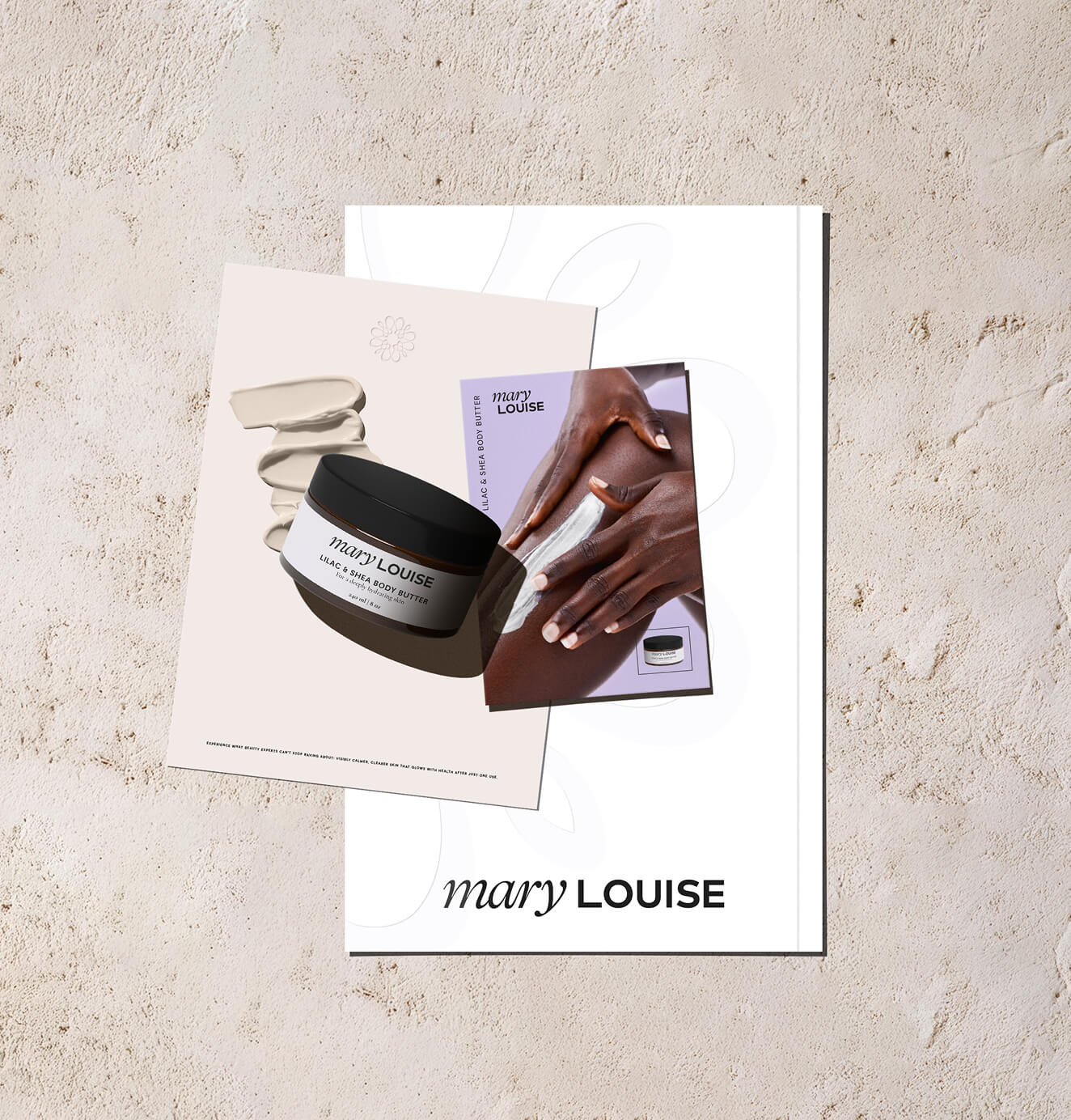Brand Tone Guidelines
03/02/2025
Branding / Marketing Strategy
A well-defined brand tone sets the foundation for clear, authentic communication—this guide will help you craft guidelines that align with your brand identity and connect with your audience.

In the dynamic world of marketing, the concept of brand tone has emerged as a pivotal aspect of a company’s identity and customer interaction. A brand’s tone, distinct from its voice, is the emotional inflection and personality conveyed through its communication. This tone plays a crucial role in how a brand is perceived and received by its audience, often guided by brand guidelines. Statistics underscore the profound impact of brand tone on business success. A consistent brand presentation can boost revenue by up to 33%. Consumers overwhelmingly prefer brands that project authenticity, with 86% favoring an authentic brand image. This preference for authenticity is further highlighted by the fact that 82% of customers are drawn to brands that align with their values, and 83% are more likely to purchase from brands they trust.
.png)


Trust and Transparency are Key



66% of customers find transparency to be one of the most attractive qualities in a brand. Furthermore, 78% of customers feel more connected to companies that use custom content to engage with them, and a significant 61% are influenced to make purchases after reading product recommendations in blog articles. This highlights the power of content in shaping a brand’s tone and establishing a relationship with the audience.
In today’s market, where trust and authenticity are paramount, understanding and strategically implementing brand tone guidelines is not just an option, but a necessity for businesses aiming to forge strong, lasting connections with their customers.
Definition of Brand Tone and Own Brand Voice
Brand tone refers to the emotional inflection and personality infused into a company’s communications. It encompasses the words, phrases, and style used in every interaction with the audience, shaping how the brand is perceived through its brand's tone.
While often used interchangeably with brand voice, the two concepts are distinct. Brand voice is the consistent expression of a brand through words and writing styles, whereas brand tone can vary depending on the context, audience, and message.
Understanding and defining your brand tone involves more than just choosing the right words; it’s about conveying your brand personality. Whether professional, friendly, humorous, or sincere, the tone should align with your brand’s core values and the message you want to convey to your audience. This alignment is crucial, as 57% of customers base their trust in a brand on the customer experience it provides, which includes communication style.
A well-defined brand tone helps in building a stronger, more authentic connection with the audience. In fact, 86% of consumers consider a brand’s authenticity important when deciding what brands they like and support.
When customers feel that a brand’s communication is genuine and resonates with their values and expectations, it fosters loyalty and trust. This is especially significant considering that 82% of customers prefer buying from brands that share their values.
In the following sections, we will delve into the importance of consistency in brand tone, how to identify your brand’s core values, and practical steps to develop and implement effective brand tone guidelines.
Consistency in brand tone is not just a marketing strategy; it’s a cornerstone of brand identity and customer relationship building. Customers expect brands to understand their needs and tailor their tone of voice and social content accordingly. A disciplined approach to brand consistency means ensuring all aspects of your brand - from visual elements to messaging and tone - are cohesive and aligned across every interaction with your audience, regardless of the platform.
This holistic brand experience creates a brand identity that resonates with your target audience on multiple levels, from website design to customer service interactions, reflecting your brand’s values and personality uniformly.
Maintaining a consistent brand image is pivotal in winning over customers. It makes your brand easier to identify and remember amid competitors. Consistently delivering a recognizable and coherent message builds trust and familiarity, leading to increased brand loyalty and advocacy.
This brand loyalty transcends mere repeat purchases; it’s about creating emotional connections. Customers who trust your brand develop a loyalty that extends beyond price or convenience, turning them into advocates and defenders of your brand in competitive spaces.
Brand Consistency Extends Beyond External Customer Perception
It provides a clear framework for employees, aligning efforts and ensuring everyone works towards the same goals, leading to improved productivity, efficiency, and overall brand performance. The tone and messaging used in communications significantly contribute to brand consistency.
A consistent brand voice, whether casual, professional, humorous, or authoritative, shapes your brand’s personality and ensures a cohesive experience for your audience. Consistency in messaging reinforces your brand values and creates a reliable perception in the customer’s mind.
In summary, brand consistency is a strategic imperative. It’s about creating a seamless experience that reinforces trust, builds strong customer relationships, and fosters a sense of brand loyalty and advocacy. It’s not just about what you communicate, but how consistently you do it across all platforms and interactions.
Identifying Your Brand’s Core Values












Before you can effectively set a brand tone, it’s essential to identify and define your brand’s core values. These values are the heart and soul of your brand, guiding not just your business decisions but also how you communicate with your audience. They are the beliefs and principles that drive your brand, influencing everything from your marketing strategies to your customer interactions.
- Reflection and Brainstorming: Begin by reflecting on what your brand stands for. What are its mission and vision? What values do you want your brand to embody? Consider aspects like integrity, innovation, customer focus, or sustainability. This brainstorming phase is crucial for laying the groundwork.
- Employee Insights: Your employees are a valuable resource in this process. Gather their insights on what they believe are the core values of the brand. This can provide a more rounded perspective and ensure that the values resonate not just externally but also internally.
- Customer Feedback: Understanding how your customers perceive your brand can also help in identifying your core values. Customer feedback, reviews, and interactions can offer insights into what your customers value most about your brand.
- Competitor Analysis: Look at your competitors and the industry. Identify what values are being highlighted by others in your space, and consider how your brand can differentiate itself. What values can your brand champion that others are overlooking?
- Synthesis and Definition: With all this information, synthesize and define a set of core values. These should be clear, concise, and reflective of your brand’s identity and aspirations. Typically, a set of three to five core values is manageable and memorable.
- Integration into Brand Strategy: Finally, integrate these values into your overall brand strategy. They should inform your brand tone, messaging, and how you communicate across different platforms and mediums. Your brand’s core values become the foundation upon which your brand tone is built, ensuring that every message and interaction is infused with the essence of what your brand stands for.
Remember, your brand’s core values are not just words on a page; they are a commitment to your customers and employees. They should be evident in every aspect of your brand, from your marketing materials to your customer service, creating a consistent and authentic brand experience.
Want to learn more about brand platforms, Brand Strategy and Brand Identity? Keep reading!
If you need help with your companies brand strategy and identity, contact us for a free custom quote.
Developing Brand Tone and Brand Guidelines

Creating a brand tone guide is a strategic process that involves defining the unique voice of your brand and how it should be communicated in different contexts. To get started, consider looking at brand voice examples to see how different tones distinguish brands from each other. This guide is an essential part of your brand identity, shaping how your brand “sounds” in various scenarios.
- Run a Brand Persona Discovery Session: Start by understanding your brand’s personality. Even if you have a broad idea of your brand voice, it’s valuable to engage in this session for fresh insights and stakeholder engagement. This step is crucial for determining the principles of your tone of voice.
- Articulate Personality Traits in Writing: Once you’ve identified the brand’s personality traits, articulate how these translate into writing. Your guide should be instructional yet accessible, explaining how to express your brand’s tone of voice with specific examples. For instance, if “empowering” is a key trait, show how this reflects in your content through a ‘show, don’t tell’ approach, using real-life examples and data to engage and inform your audience.
- Technical Write-Up and Style Translation: This involves translating the brand persona into a practical writing style, detailing the grammar and words to use. It’s about finding the balance between being instructive and maintaining ease of use, offering clear guidelines on grammatical and stylistic choices that embody your brand’s tone.
- Provide Clear Examples: Use specific examples to illustrate each principle of your tone of voice. For example, a “no-nonsense” tone for a finance brand could mean avoiding jargon, using short sentences, and being concise, with specific examples provided for each of these stylistic choices. A strong brand voice is essential for consistency, recognition, and standing out in the crowded digital landscape.
- Iterative Updates and Usage Plan: Brands evolve, and so should your tone of voice guide. Regular audits and updates are essential. Review your brand identity, including your tone of voice guide, at least annually, or more frequently if needed due to new products, changes in proposition, or significant external events. This will ensure your guide remains relevant and effective.
By following these steps, you can create a brand tone guide that not only defines your brand’s unique voice but also ensures it’s consistently applied across all forms of communication, resonating with your target audience and strengthening your brand identity.
Adapting Tone Based on Customer Experiences and Target Audience
Effectively adapting your brand tone based on customer experiences is crucial for maintaining strong relationships and managing different situations.
Here’s how to adjust your tone in various scenarios:
- Angry or Upset Customers: When dealing with angry or upset customers, adopt a tone that is empathetic, patient, and understanding. Avoid being overly cheerful or casual, as this can seem dismissive. Acknowledge their feelings, provide clear explanations, and offer solutions. In some cases, a more formal tone may be necessary to appear authoritative and professional.
- Happy or Satisfied Customers: In interactions with happy customers, a more upbeat and congratulatory tone is appropriate. Express gratitude for their support, and maintain a positive, engaging demeanor.
- Customers Expressing Concerns or Complaints: For customers voicing concerns or complaints, use a tone that is attentive, serious, and solution-focused. Show that you take their concerns seriously and are committed to resolving any issues.
- Energetic or Enthusiastic Customers: When engaging with energetic or enthusiastic customers, match their energy with a vibrant and engaging tone. This creates a more relatable and enjoyable interaction.
- Confused or Seeking Customers: For customers who are confused or seeking information, use a clear, informative, and reassuring tone. Provide concise and helpful information to guide them effectively.
By tailoring your brand tone to suit the emotional state and needs of your customers, you demonstrate empathy and understanding, which can significantly enhance customer relations and loyalty.
Implementing Brand Tone Across Your Organization
Implementing your brand tone across the organization ensures consistency in all customer interactions. A unique brand voice is crucial for standing out from the competition and appealing to your target audience.
Here’s how to achieve this:
- Training: Conduct training sessions for all employees, especially those in customer-facing roles. These sessions should cover the brand tone guide, with practical examples and role-playing scenarios.
- Internal Communications: Use your brand tone in all internal communications. This helps staff naturally adopt the tone in external communications.
- Feedback and Refinement: Regularly gather feedback from employees on the brand tone’s effectiveness and make necessary adjustments.
- Consistency Checks: Regularly audit customer-facing content and interactions to ensure consistency with the brand tone.
- Empowerment and Accountability: Empower employees to use the brand tone creatively while holding them accountable for maintaining consistency.
By embedding the brand tone into the fabric of your organization, you ensure a cohesive and authentic brand experience for all stakeholders.
Monitoring and Evolving Your Brand Tone
Continuously monitoring and evolving your brand tone is essential to stay relevant and effective. A distinct personality helps define your brand voice, curating a unified approach to tone, style, and messaging to build brand recognition and nurture connection with your audience.
Here’s how to approach this:
- Collect Feedback: Regularly gather feedback from customers and employees about how your brand tone is perceived and its impact.
- Analyze Engagement: Monitor customer engagement across various platforms to see how different tones resonate with your audience.
- Stay Current: Keep abreast of cultural and market trends to ensure your tone remains relevant.
- Evolve with Your Audience: As your audience grows and changes, be prepared to adapt your brand tone to maintain a strong connection.
- Review Regularly: Periodically review and update your brand tone guidelines to reflect any changes in your brand strategy or audience preferences.
By attentively monitoring and adapting your brand tone, you can ensure that it continues to represent your brand effectively and resonates with your audience.
Conclusion and Takeaways

In conclusion, establishing and maintaining a consistent brand tone is a key aspect of your brand’s identity and customer engagement strategy. Developing a unique brand's voice is equally important as it helps your company stand out and effectively communicate with your audience. From identifying your core values to adapting your tone across different platforms and customer experiences, each step is crucial in shaping how your audience perceives and interacts with your brand.
Remember:
- Consistency is key in brand tone.
- Adaptability allows for effective communication across various scenarios.
- Regular monitoring and evolution of your brand tone are essential to stay relevant.
Implementing these strategies will ensure a cohesive brand experience, fostering trust and building stronger customer relationships.
Frequently Asked Questions (FAQs)
What is brand tone?
- Brand tone refers to the emotional inflection and style used in a brand’s communication, reflecting its personality and values.
How is brand tone different from brand voice?
- While brand voice is the consistent expression of a brand, brand tone can vary depending on the context, audience, and message.
Why is consistency important in brand tone?
- Consistency in brand tone builds trust, makes the brand easily recognizable, and ensures a cohesive brand experience.
How can I adapt my brand tone for different platforms?
- Understand each platform’s unique characteristics and audience preferences, and adjust your tone accordingly while maintaining underlying brand consistency.
How often should I review and update my brand tone?
- Regularly, at least annually, or more frequently if there are significant changes in your brand strategy or audience preferences.

Sloane Avery
As entrepreneurs, they’ve built and scaled their own ventures from zero to millions. They’ve been in the trenches, navigating the chaos of high-growth phases, making the hard calls, and learning firsthand what actually moves the needle. That’s what makes us different—we don’t just “consult,” we know what it takes because we’ve done it ourselves.
Want to learn more about brand platform?
If you need help with your companies brand strategy and identity, contact us for a free custom quote.
We do great work. And get great results.
+2.3xIncrease in revenue YoY
+126%Increase in repurchase rate YoY








+93%Revenue growth in first 90 days
+144% Increase in attributed revenue








+91%Increase in conversion rate
+46%Increase in AOV








+200%Increase in conversion rate
+688%Increase in attributed revenue












